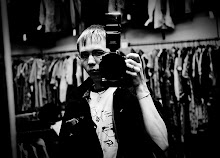
In the United States, never in one hundred million years would a photographer be allowed to openly walk into the AIDS ward of a hospital and photograph anything they please. But this isn’t the United States, this is Uganda, and I was there. I was there with my camera. And I was there because for many Africans, international media coverage is a key ingredient to addressing Africa’s problems.
The patients and families want the press to cover their situation. A woman turned me to her very-ill husband and asked me to photograph him. “Thank you.” She said. She realized that she wasn’t in control, and that by someway giving her husbands condition awareness, there is more of a chance that someday, a more effective means for preventing HIV/AIDS will be harnessed.
While Uganda has been one of the most effective countries in combating HIV, it remains a large problem. The hospital system here is not adequate. i talked with a man in the ward about the hospital. "There are not enough doctors," he said. "We have to wait a very long time for help."
The government of Uganda lacks the infrastructure and wealth to properly pay its doctors. Doctors here are paid peanuts, and because of it, most individuals qualified to give medical treatment have left to work in a country that they will better be able to live comfortably.
At the core of the problem is corruption. Because most third world countries lack accountability and monitoring, moneys disappear. International aid to Uganda should be able to fix this problem. On the contrary, more people are suffering because the money never gets to a place where it can effectively cure them.
It’s important to look at these pictures and understand what they mean. The man pictured is a human being, just like you and i. he is a husband, a father, and a friend to many. Images of disease and pestilence should not be lightly discarded. You should not become desensitized by them.
It saddens me to see that the American media does not address these problems. Time magazine alone has enough power to make drastic change if they were persistent enough with their coverage of global healthcare. However, pictures of the Obamas, half-naked women, and celebrity basket-cases sell magazines—dying Africans become irrelevant. It is a tragedy that we live in a day where a photograph of a person in dire need of help gets smothered out in order to sanctify a politician on the cover of the same magazine for 3 months straight.
The fact that people don’t want to see pictures of people suffering is an indicator that people don’t want others to suffer at all. This is what gives me hope. If we were to find a way to get people to help the poor after reading an article about extreme poverty instead of turning away from the article or photograph and saying “Well that’s that, there is nothing I can do.” Then we could be truly effective in helping the third world.
I ask that everyone demand that global problems be covered by the media. And if they are covered, I strongly ask that you read that material, and look in to what you can do to help. Good journalism will provide an outlet for the readership to act. And when that outlet is offered, take a stand.


No comments:
Post a Comment